- The Wipeout Weekly
- Posts
- 🏄♀️ Can you still call yourself a surfer if you never surf? 🫢
🏄♀️ Can you still call yourself a surfer if you never surf? 🫢
Plus: Mexico’s wave machine, WSL’s deal, the origins of kook
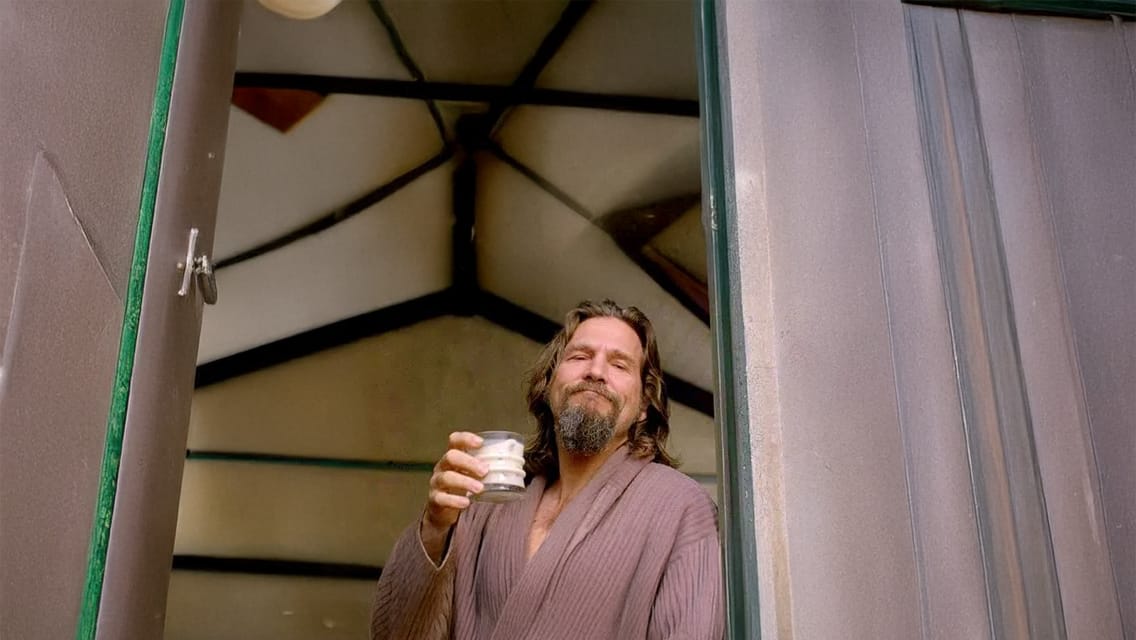
👋 Happy Belated International Surfing Day! Didn’t get to surf last Saturday? That’s ok—the surf doesn’t care. There are 364 other days in the year to paddle out. 😜
🏄♀️ Let’s surf:
Can you still call yourself a surfer if you never surf? 🏄🏻♀️
La Saladita’s wave machine 🌊🌊🌊
The origins of ‘kook’ 💩
What’s the deal with the WSL? 🤨
No permission needed to surf Pipeline 💪
SURFODRAMA
😱 Can you still call yourself a surfer if you never surf? 🏄🏻♀️

The Patron Saint of Not Getting Around to It.
It’s been 105 days since we launched The Wipeout Weekly. I have most definitely spent more time writing, talking, and reading about surfing than actually surfing. I do feel bad about it. But also—I know I shouldn’t.
After all, I’m a permanent occasional surfer, with pockets filled with excuses. It’s cloudy. The waves are too big. So much clean-up afterwards. I’m exhausted. The drive’s too long. OMG, it’s freezing. My wetsuit doesn’t fit. My board sucks ass. There will be people there. Oh man, I’m just not feeling it.
Sounds familiar?
The list of why we don’t go out surfing is as long as Pipeline is high. But if we love surfing so much, why don’t we just go more often?
That’s the trap—treating surfing like it’s all-or-nothing.
But Hanka, one of the Girls Who Can’t Surf Good, summed it up better than I ever could: “I love pizza too. But I don’t eat it every time I theoretically could.”
When I started surfing in the UK, I would travel to the surf for hours, every weekend, like clockwork. In the summer and in the winter. And here I am, minutes away from the break in Southern California—I still can’t get my ass over there.
Here’s something weird: locals often surf less than out-of-towners who plan trips. Proximity doesn’t automatically create discipline. But the guilt that comes from “I could go but I won’t” is real.
And as Pammie wisely put it: “You get picky and lazy when it’s walking distance from home… in a way, you’re better off not living at the beach.”
It’s funny how it works. You know surfing is good for you. You won’t regret going, but you will regret not going. No one’s ever regretted getting a bit wet, sitting on a board in the ocean, not catching waves.
But you need to give yourself permission not to go out surfing—and not feel guilty about it. Otherwise, you’re going to go loopy. And we have enough crazy surfers as it is.
You can be like Josephine: “Sometimes I push through and go anyway and have fun… and other times I give myself permission to do other things and let surfing go.”
Or use a surf-forcing function like Courtney: “Park in a tow zone overnight. Then it’s either wake up to surf… or a $500 fine.” 😜
SURF SPOT SPOTLIGHT
La Saladita’s wave machine 🌊🌊🌊
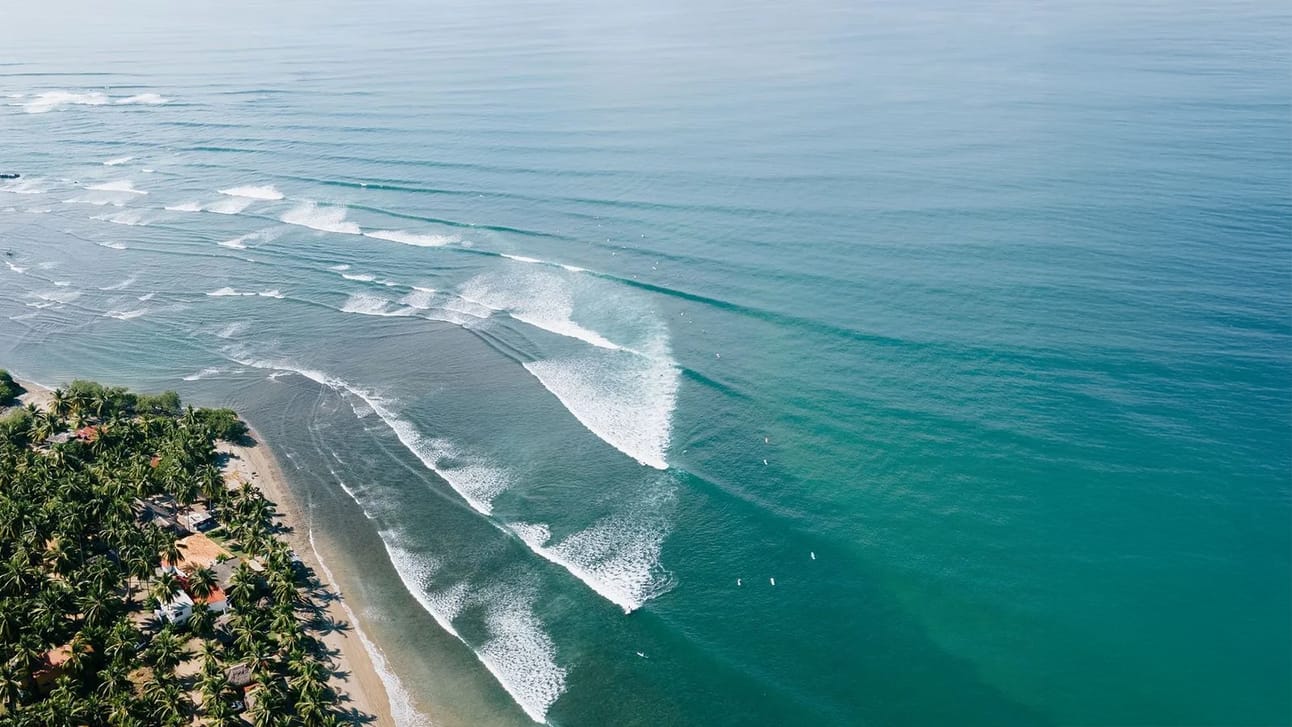
La Saladita for beginner surfers? Oh yes. This sleepy point break in Guerrero, Mexico is known as “The Wave Machine”—and for good reason. It’s one of the most consistent and mellow left-handers in the country, perfect for longboarders, foamies, and anyone chasing long, cruisy rides. It’s way less chaotic than spots like Sayulita, but you won’t find a big nightlife scene. Which honestly… might be part of the charm.
La Saladita is a rural beach town on Mexico’s southwest coast, about 45 minutes north of Zihuatanejo in the state of Guerrero. It’s not built up like other surf towns, but it has everything you need: a few great restaurants, surf-friendly accommodations, and a laid-back, no-hurry pace.
You come to La Saladita to surf, eat, and sleep. It’s not a scene—it’s a rhythm. Wake up with the roosters, paddle out at sunrise, eat your weight in huevos rancheros, and repeat.
🌊 The surf
La Saladita is a long, mellow, left-hand point break that works best on a longboard or mid-length. The takeoff is soft and forgiving, the rides can last for ages, and it rarely gets too heavy. On small days, it’s a dream for beginners. On big days, the outside sections challenge intermediates while beginners stick closer to shore.
🚿 Water quality
Generally good! Because it’s rural, you don’t get much urban runoff. That said, it’s still Mexico—so don’t drink the tap water and maybe skip a post-storm session just in case.
👙 Wardrobe
Boardshorts or bikinis, year-round. The water is warm and dreamy. You might want a rash guard or surf suit if you’re prone to sunburn, and some folks wear booties because of the cobblestone bottom.
☀️ Best time for beginners to go
November through March is dry season—great weather, small-to-medium swells, and clean conditions. May–September brings bigger surf and occasional rain, but early mornings still offer beginner windows. Summer can get hot and humid, but the waves keep coming.
⚠️ Hazards
Rocks near the takeoff zone, especially at low tide. It’s a cobblestone reef, not sand, so just watch your footing. Also, it’s very remote—so bring your own meds, zinc, and essentials. The wave itself? As friendly as it gets.
🏄 Rentals + lessons
A few spots on the beach rent longboards, and many guesthouses offer lessons or can connect you with a local coach. It’s not Sayulita-level infrastructure, but the instructors here are mellow and used to beginners who want to ride their first 100m wave.
🍉 When you’re not surfing
Eat fish tacos and fresh mango
Swing in a hammock and read your book
Take a siesta and call it “cultural immersion”
Watch the sunset while dolphins breach in the bay
🧳 Solo friendly?
Yes—if you’re cool with quiet. La Saladita is peaceful, safe, and filled with surf families, mellow travelers, and longboard die-hards. If you're looking to party, this isn't the place. But if you're looking to reset, reflect, and ride long lefts? You're golden.f, soak up Senegalese culture, and enjoy warm vibes on and off the beach.
WORD OF THE WEEK
Why being a kook used to mean you were literal crap 💩
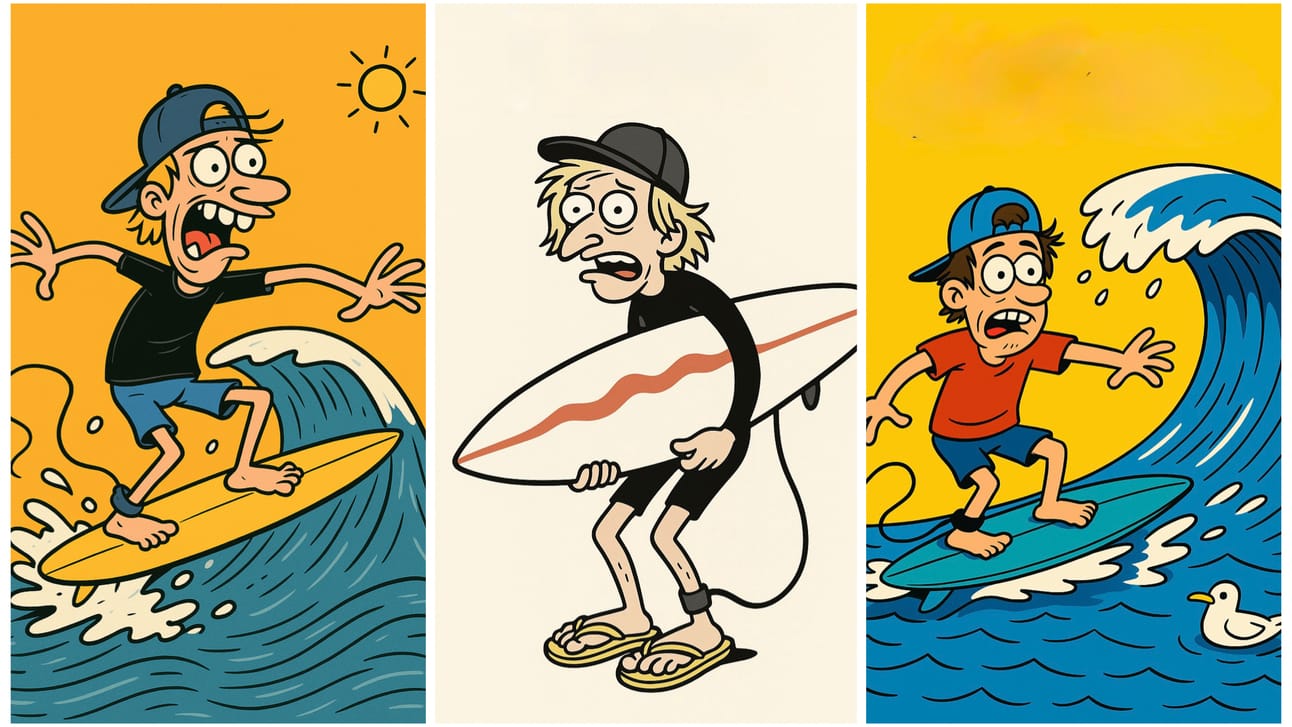
How ChatGPT sees a kook. Apparently only men can kook.
This is going to be a tough one. We’re at the crossroads as to where “kook” actually came from.
If you believe Etymology Online, it was adapted by surfers from the beatnik slang of “kooky” from “cuckoo”. First seen in the Life magazine on January 5, 1959. And this is in line with how The Oxford Dictionary still defines kook in this original sense: an informal noun for a crazy or eccentric individual.
But wait. We have a much better origin story available thanks to Matt Warshaw, the original surfing custodian. According to Matt, the origins of kook have nothing, nada, zero to do with a cuckoo, you know the bird. And all to do with the Hawaiian word “kūkae” meaning basically “poo”. Wow, I bet you will feel different know when someone call you a kook.
🏄♂️ The San Onofre story
The story goes that a group of early surfers in the 1940s (led by Dorian “Doc” Paskowitz at San Onofre, California) jokingly named their makeshift outdoor toilet spot “Kukae Canyon,” using the Hawaiian term for excrement. They’d say “I gotta go take a kūkae,” which they soon got shortened to “take a kook.” And from there as Paskowitz later recalled to that "anything bad was a 'kook,' including somebody who couldn't surf—or if he was just an asshole.
👀 A few more kooks
Kookbox - a hollow surfboard from the 40s and 50s
Kook cord - a leash
Kook Repellent - a polymer foam spray
Wilbur Kookmeyer - a cartoon character in “Surfer” magazine
"The Cardiff Kook” - “Magic Carpet Ride” sculpture in Encinitas
🤔 What does “kook” mean today?
What does “kook” mean today? We’re going to go with the EOS definition: “timeless derogatory surfing term, generally applied to rank beginners, but also used for any surfer thought to be in violation of surfing’s complex unwritten code of conduct.” Worth noting, sometimes it’s spelled “kuk”.
SURF THRU HISTORY
What’s the deal with WSL? 🤔
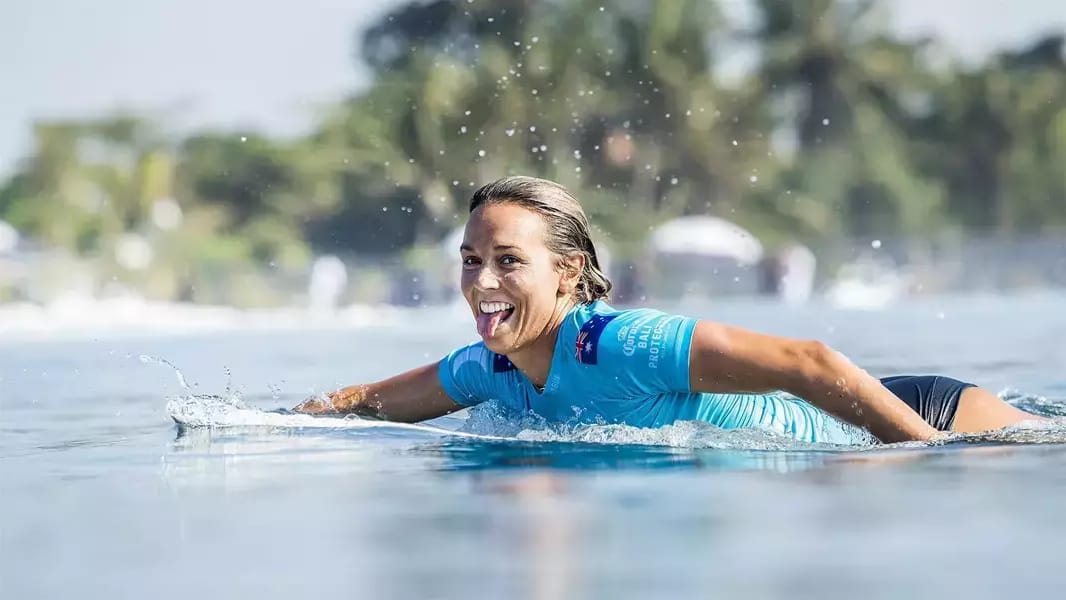
Sally Fitzgibbons is GOAT.
If you’ve ever watched a pro surf comp, you’ve probably heard of the World Surf League, or WSL. But it wasn’t always the slick, drone-shot, globally streamed production we know today.
It all started in 1976, when two Hawaiians, Fred Hemmings and Randy Rarick, launched the International Professional Surfers—or IPS—circuit. It was the first attempt to create a unified world tour, stringing together competitions across countries and continents.
The organization went through a few incarnations until it was rebranded as the World Surf League under billionaire surf fan Dirk Ziff. Along with the name change came a massive overhaul. We’re talking slick livestreams, professional commentary, social media storytelling, and eventually—equal prize money for men and women by 2019.
📅 What’s changing in 2026?
The 2026 Championship Tour is actually getting a major shake-up. The season will run from April to December, kicking off in Australia and wrapping up where it all should—Hawai’i. That finale will be the legendary Pipe Masters, now restored as the crown jewel of the Tour.
Surfers will compete in nine regular season events. From there, the field narrows down to 24 men and 16 women, who’ll head into two new postseason events—Surf Abu Dhabi and Peniche in Portugal. Then comes the grand finale at Pipeline, with all the original CT surfers rejoining the mix.
🏆 Why Pipeline matters more than ever
And Pipeline isn’t just symbolic—it’s now the highest-stakes event on Tour, awarding 15,000 points instead of the usual 10,000. The top eight men and women heading into Pipe will get deeper seeds in the draw, giving them a strategic advantage.
🧐 How do they judge the surfers?
What do the judges care about? I mean, how they’re scoring surfers in heats.
It’s based on:
Commitment and degree of difficulty
Innovative and progressive maneuvers
Combination and variety of maneuvers
Speed, power, and flow
💰 What’s the prize money like?
If you do well, there’s money to be had. You’re not competing so you’re not going to care how much you can get at each stage of this rung climbing event. In total about $11M is at stake. But if you ended up in the last 5…
🥇 1st place: $200,000
🥈 2nd place: $100,000
🥉 3rd place: $75,000
4th place: $60,000
5th place: inexplicably $40,550
Worth shelling out just under $100 to enter a single event? Sure, why not.
📍 2026 WSL Championship Tour Schedule
Bells Beach, Victoria, Australia
Margaret River, Western Australia, Australia
Snapper Rocks, Queensland, Australia
Punta Roca, El Salvador
Saquarema, Brazil
Jeffreys Bay, South Africa
Teahupo'o, Tahiti
Cloudbreak, Fiji
Lower Trestles, Calif., USA
Surf Abu Dhabi, United Arab Emirates
Peniche, Portugal
Pipe Masters, Hawai‘i, USA
The WIPEOUT WEEKLY POD
No permission needed to surf Pipeline with Jade Darmawangsa 🌊
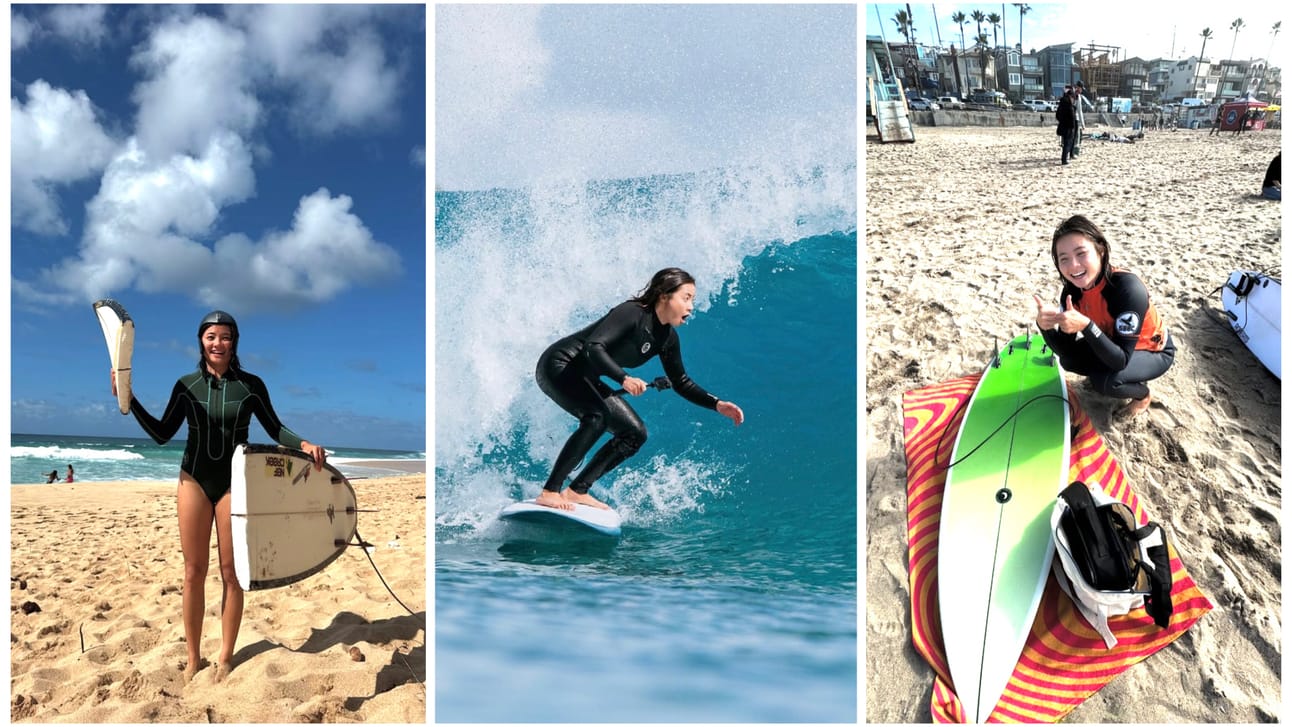
What do you do when you fall in love with surfing… and absolutely refuse to quit?
This week, we chatted with Jade—self-taught surfer, YouTube creator, and accidental waxing-video legend. We talk heartbreak-fueled ambition, scary dads in the lineup, bouncing back from injuries, trolls, and what it’s like to paddle out at Pipeline with 25 people filming.
And Jade had a special announcement about Girls Who Can’t Surf Good, too!
Listen to The Wipeout Weekly on your fav pod platform or here.
⬆️ Aaaaaaand that was the last wave of the week!
If a friend forwarded this and you liked it, hit subscribe & join us! We will see you all next week! 🌊
🏄 How was this week's edition of The Wipeout Weekly?Drop in with your pick 👇 |

Reply